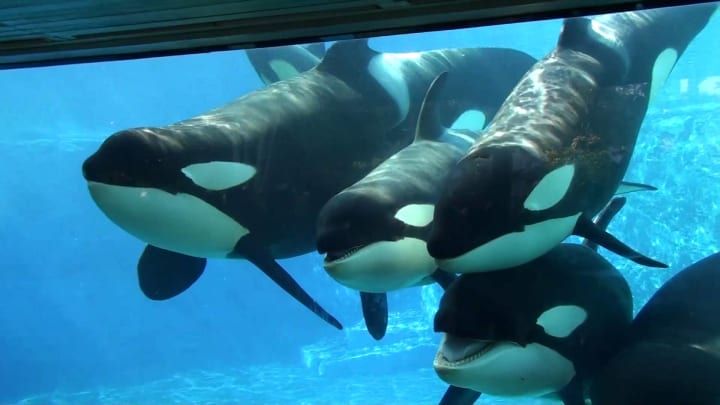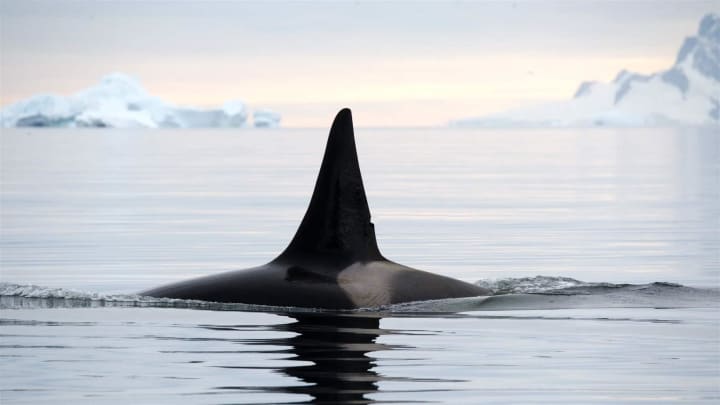Wolves of the Sea
It's time to for 'Free Willy' to become a reality...

It is amazing what you can remember as a child. Whether it be the first time you watched your favourite movie or heard your favourite song. What is even more amazing, is how innocent the memory seemed. You never paid attention to what was happening in the movie, or what the lyrics said, you innocently enjoyed the moment.
In my case the movie was ‘Free Willy’, the extraordinary tale of an Orca whale placed into captivity and trained to perform in front of crowd’s day-in-day-out. I loved it. Seeing Willy launch out of the water and interact with Jesse, his kid trainer was fun to watch, and especially at the end of the movie as Willy leaps over a large wall into the open ocean. It was pleasing to the eye back then and now.
But what I know now, which I didn’t then, was what ‘Free Willy’ was really about. The story was much more than a whale performing tricks, and whilst as a child it was cool to watch, as an adult it told a much darker story.

Now, my love for the movie hasn’t dimmed with time nor even after coming to understand the narrative. If anything, it has increased, and my newfound appreciation stems from the realisation of what ‘Free Willy’ was trying to say.
Here was a story that was based in fact, a highly emotional animal that was taken from the open ocean and placed into a small tank to perform for the entertainment of humans. It was something that my child-brain distracted me from, from the more rational human aspect that matures with age. Suddenly, the story of Willy was much more than images of Orca whales performing awesome tricks, this was cruelty and it was art imitating life.
There are numerous arenas across the globe that sell the magic that the businessmen in ‘Free Willy’ sold. Here is an animal that loves to perform for you, he wants to be your friend, to play with you. It is indicative of the nature of entertainment today that involves animals; make them appear somewhat human to sell a human experience.
The irony of this is astonishing; there is nothing humane about these whale shows and although ‘Free Willy’ may have been a fictional version of the truth, a documentary would emerge that would change attitudes forever.
‘Black Fish’ became the catalyst that pushed the narrative of the treatment of Orca whales in captivity to the forefront of damnation. For years the debate had grown hotter and hotter, but with the explosive documentary, suddenly the full irresponsible lack of care for these animals and the trainers employed to work alongside them, came into clear fruition.

The documentary featured interviews and testimonies from former Sea World employees, who lifted the lid on the damning failures of care and safety when dealing with Orca whales. This lack of training led to the tragic and completely avoidable death of Dawn Brancheau, who was horrifically killed by Tilikum, a whale who had shown distress and hunting tendencies for years.
What these outlets, detailing the abuse of these whales, painted was a bigger picture surrounding the culture of animal entertainment. And whilst there are many debates against using animals within scenarios like Sea World and other similar attractions; the Orca whale is the most hotly contested.
It is worth noting that Orcas are extremely emotional animals. They live within Pods their whole lives and communicate on an emotional capacity with each other. They are highly intelligent and without the right stimulation can become depressed and even resort to harming themselves. Perhaps one of the most interesting and tragic aspects of an Orca whale, is this. Orca’s have a greater access to the emotional parts of the brain than we humans, meaning that they understand emotions on a deeper level. This is portrayed in the ‘Blackfish’ documentary by showing footage of Tilikum, the whale which killed trainer Dawn Brancheau, bashing his head against the wall in distress.
What is truly upsetting about these whale shows that feature across the globe, is the lack of care to the whales, not only on an emotional level but physical too.

The average size of an adult Orca is typically between 20-26ft. The average size of one whale tank at Sea World is 350ft long and 50ft deep. This may seem small, and it is, but shockingly these figures are an increase of just 15ft in depth than previous tanks. And considering that Orcas in the wild travel up to 100 miles every day, Sea World’s pools will always never be enough.
We could sit here and reel off statistic after statistic, and there are hundreds to argue against the captivity of Orca whales, but to truly understand the immoral existence of these shows is to witness Orcas in the wild.
There is nothing as magical as seeing a pod of whales breach the waves of the ocean. To watch them socialise amongst unrestrained freedoms the wild offers reinforces that belief that these majestic animals should not be in tanks. In the wild, whales are physically and emotionally stimulated, fully experiencing social interaction and exploration. This cannot be achieved in a tank, and this failure results in the emotional distress that in turn results in incidents like the death of Dawn Brancheau.
Another aspect that makes the captive compulsion of these whales so irresponsible stems from the other name to describe Orcas, killer. Killer whales, the clue is in the name.
At Sea World, Orcas are described as ‘thrilling sea creatures.’ In the natural world by marine biologists, they have another description, ‘Wolves of the sea.’ Orca whales are extremely successful hunters that use cunning planning and techniques to hunt their prey. Knowing this, it seems almost insane to place an animal like that into a tank, and furthermore place humans in there with them.

To understand the absurdity of this, imagine placing a Great White Shark into a tank and then place human beings in there with it freely. It would never happen, so why does it occur with an animal who hunts and feeds on Great White Sharks? It is because they look friendly, because the savvy PR machine has twisted the hunter’s appearance to be your friend. A wolf may look like a dog, but given half the chance, they’ll still eat you to survive. Why? Because like Orcas, it is their natural instinct, it is part of their DNA.
The truth is, Orcas and humans should not be combined in a unity of entertainment. It is dangerous, irresponsible and cruel. It disrupts that natural order of things and places immense stress on a species of animal that depends on emotional stability to survive. Orcas never did and never will belong in captivity, they aren’t designed for it.
The shows need to end, and it shouldn’t be in the vain of ‘Free Willy,’ jumping over a wall into the vast ocean beyond. It should be down to us and our leaders who profess such commitment to the environment and all those who share it, realising that these animals don’t need to be used for entertainment, but instead to be watched from afar and to simply enjoy Orcas whales for what they are, wild.
See more articles like this:
About the Creator
Jonathan Reed
Our blog covers everything from entertainment, Movies, Politics, The Royal Family and so much more!!
Let's get ready to RUMBLE!
Visit us at our website:






Comments
There are no comments for this story
Be the first to respond and start the conversation.